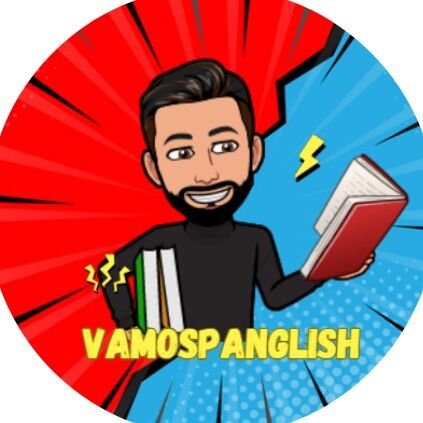Learning a new language is both a challenge and an exciting adventure, especially for children. When it comes to teaching Spanish to young learners, there is no one-size-fits-all approach. The key to success lies in providing age-appropriate learning experiences that cater to each child’s developmental stage. Vamospanglish, a platform dedicated to teaching Spanish through interactive and engaging content, has embraced this philosophy, creating lessons that are both fun and educational.
In this article, we will explore how age-appropriate learning boosts Spanish fluency for kids, focusing on why tailoring lessons to specific age groups is critical to language acquisition. We will also highlight the specific methods used by Vamospanglish to cater to various age groups, ensuring students progress naturally from basic vocabulary to conversational fluency.
Why Age-Appropriate Learning Matters
Every child goes through different stages of cognitive, emotional, and social development. A five-year-old, for example, processes information and learns in a completely different way than a twelve-year-old. Teaching Spanish to children must consider these developmental differences, otherwise, the process can become frustrating, causing children to lose interest.
Age-appropriate learning not only makes the material more accessible but also more enjoyable. By using methods suited to a child’s stage of development, they can more easily absorb new vocabulary, grasp grammatical structures, and gain confidence in using the language in real-life situations.
In the context of language learning, age-appropriate strategies can include everything from singing songs with young children to role-playing or discussing cultural topics with teens. Vamospanglish recognizes the importance of age-specific teaching methods and has structured its curriculum accordingly, making sure that each student receives the right type of learning experience for their age.
For the Little Explorers (Ages 5-7)
When it comes to teaching Spanish to younger children, it’s all about keeping things playful. Kids in the age range of 5-7 years old are often referred to as “little explorers,” as they are full of energy, curiosity, and imagination. At this stage, it’s crucial to use activities that stimulate the senses, as young children often learn best through visual, auditory, and kinesthetic experiences.
Vamospanglish uses a combination of catchy songs, colorful visuals, and interactive games to teach basic vocabulary and sentence structures. These fun, engaging activities not only hold the child’s attention but also make learning feel like play rather than work.
Key Methods for This Age Group:
- Songs and Rhymes: Music is a powerful tool in language learning for young kids. Songs with repetitive lyrics help children memorize new words and phrases without even realizing they are learning.
- Storytelling and Visuals: Simple stories, especially those with captivating illustrations, introduce new vocabulary while fostering an emotional connection with the language.
- Games and Hands-On Activities: Interactive games that involve movement or hands-on interaction, such as flashcards or online quizzes, make the learning process more dynamic.
By focusing on these activities, Vamospanglish ensures that the youngest learners develop a love for Spanish at an early age, setting a strong foundation for more advanced learning in the future.
For the Budding Learners (Ages 8-10)
As children grow, so do their language-learning abilities. Kids in the 8-10 age group, or “budding learners,” are typically ready to move beyond basic vocabulary and start constructing simple sentences. They are also more open to structured learning, making this the perfect time to introduce more formal aspects of the language, such as grammar.
At this stage, children can handle a greater variety of learning methods, including short dialogues, sentence building, and role-playing. Vamospanglish introduces these elements slowly, making sure the lessons remain fun while increasing the linguistic complexity.
Key Methods for This Age Group:
- Grammar Introduction: Kids are introduced to fundamental grammar rules in a way that is digestible, such as how to form plurals or conjugate verbs in the present tense.
- Role-Playing: Role-playing exercises allow children to practice their conversational skills in a relaxed, low-pressure environment.
- Short Dialogues and Scripts: Engaging with short dialogues helps children apply what they’ve learned and see how vocabulary and grammar come together in real-world conversations.
By this stage, children can start to hold basic conversations in Spanish, giving them a sense of achievement that boosts their confidence.
For the Aspiring Bilinguals (Ages 11-13)
Pre-teens in the 11-13 age group, or “aspiring bilinguals,” are at a stage where they are ready to tackle more complex aspects of the Spanish language. This is the time when kids can move beyond basic conversations and start engaging with verb conjugations, tenses, and deeper cultural topics.
Vamospanglish introduces more advanced grammar at this stage while still maintaining an interactive and supportive learning environment. The use of multimedia content—such as videos, cultural stories, and online games—helps keep the lessons engaging.
Key Methods for This Age Group:
- Advanced Grammar: Students dive into past and future tenses, pronouns, and more complex sentence structures.
- Cultural Exploration: Introducing students to the culture behind the language can motivate them to explore Spanish beyond the classroom. Vamospanglish incorporates stories, festivals, and traditions from Spanish-speaking countries.
- Online Quizzes and Exercises: Digital tools like quizzes and interactive exercises allow students to practice their grammar and vocabulary in a fun way, ensuring they retain what they’ve learned.
With these methods, children start to gain a more well-rounded understanding of Spanish and can handle more sophisticated conversations.
For Teens Ready to Excel (Ages 14+)
Finally, for teens aged 14 and above, learning Spanish becomes a more academic pursuit. Teens at this age are typically capable of grasping intricate grammatical concepts and have a greater understanding of the cultural nuances of the language. Vamospanglish helps teens refine their skills through in-depth lessons, focusing on conversational fluency and cultural literacy.
Key Methods for This Age Group:
- Complex Grammar and Syntax: Teens learn advanced grammar, such as the subjunctive mood, conditional tenses, and idiomatic expressions.
- Cultural Discussions: Lessons focus on both language and culture, with teens learning about literature, history, and social issues in Spanish-speaking countries.
- Conversational Practice: Real-world practice is essential at this stage. Teens are encouraged to engage in extended conversations, debates, and presentations in Spanish to hone their fluency.
At this point, students are preparing for exams like GCSE or their future travels in Spanish-speaking countries, giving them practical motivation to excel in the language.
Conclusion
Age-appropriate learning is essential for boosting Spanish fluency in kids. By catering to the specific needs and developmental stages of children, Vamospanglish ensures that each learner progresses at the right pace. Whether it’s through playful songs, role-playing, or deep dives into cultural topics, every age group has the tools they need to succeed in their Spanish journey. With the right guidance, every child can become fluent and confident in speaking Spanish.


Totally agree!